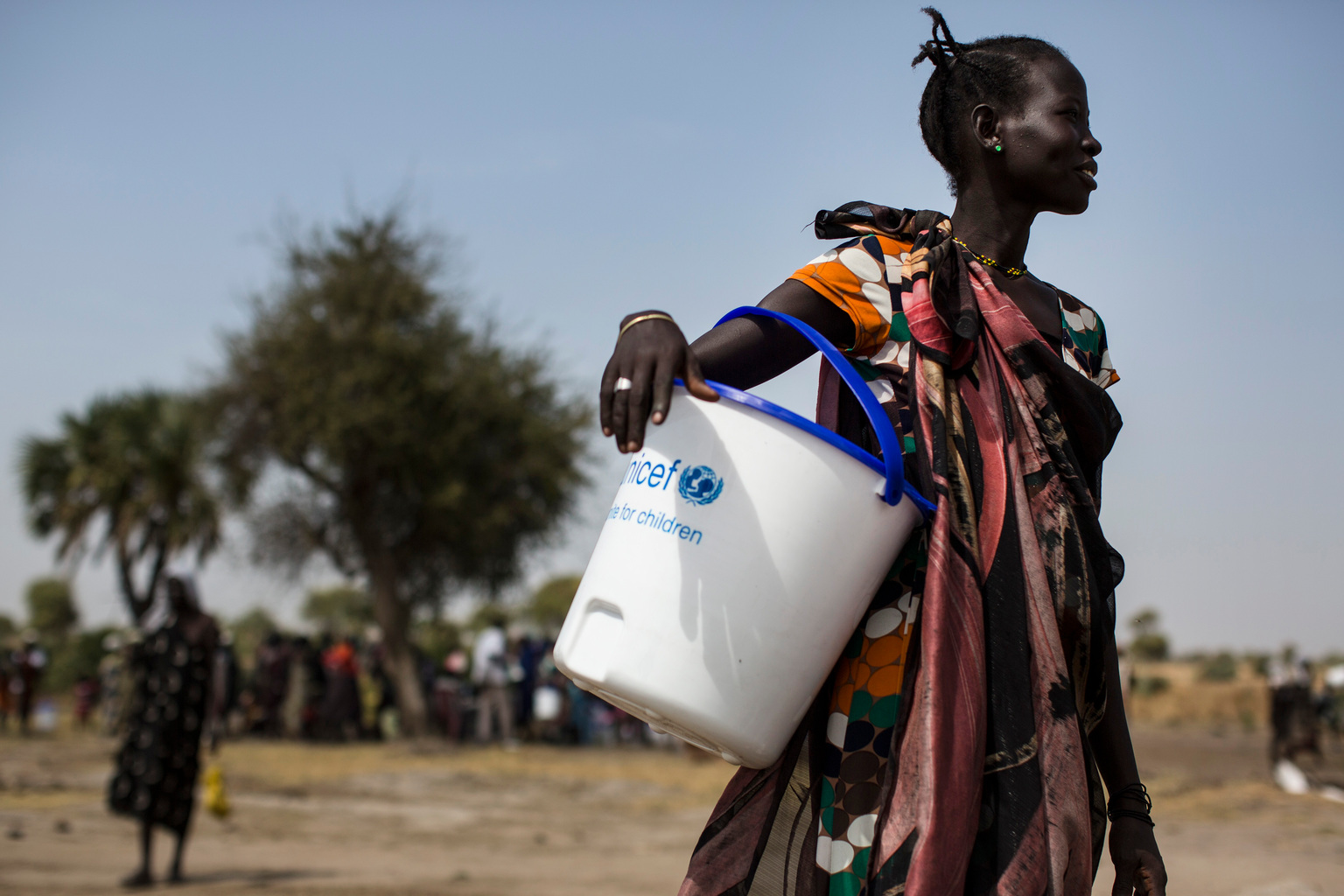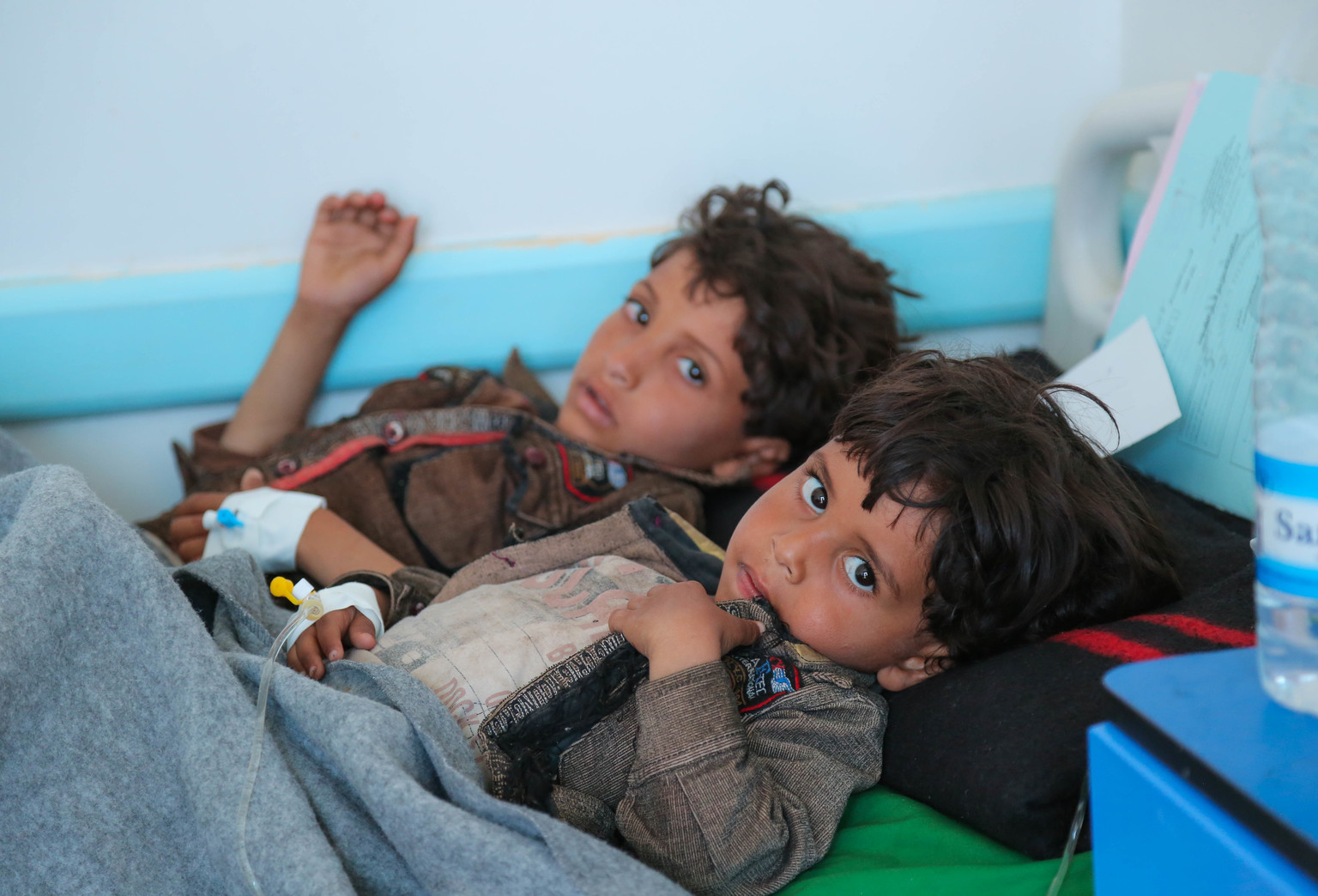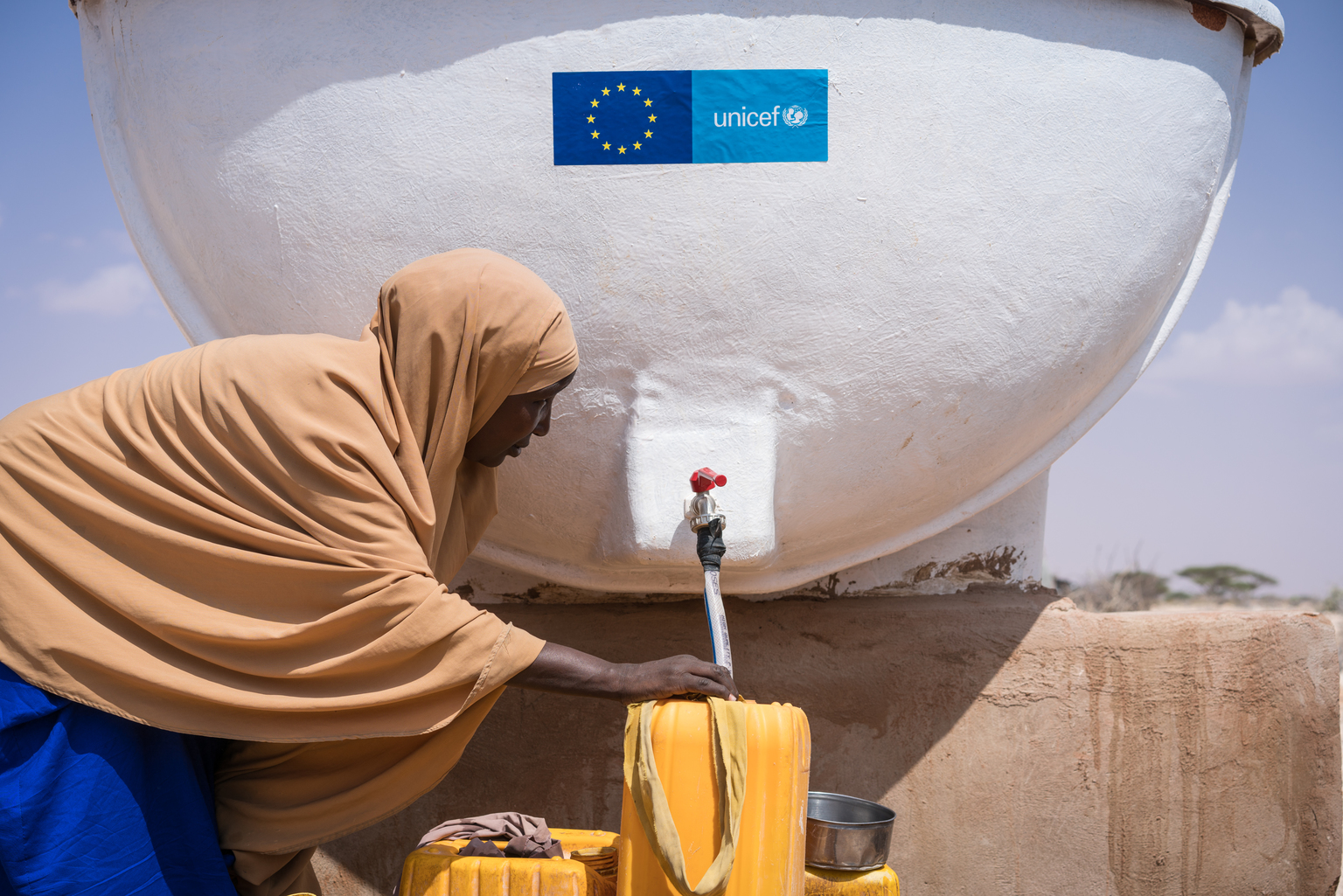4 things you need to know about water and famine
2017-09-01
© UNICEF/UN055942/Gilbertson
Conflict, drought, displacement and disease are driving massive humanitarian crises, leaving 20 million people at risk of famine across Yemen, Somalia, South Sudan and north-east Nigeria – including nearly 1.4 million severely malnourished children at imminent risk of death.
These crises are spreading to surrounding countries, with severe drought impacting the Horn of Africa; more than one million South Sudanese refugees fleeing conflict, stretching capacity and resources in Uganda; and displacement throughout the Lake Chad basin resulting from conflict, climate change, environmental degradation and poverty.
When we think of famine, we often think of a lack of food. But increasingly the crisis is one not only of food insecurity but also of clean water, sanitation and health care – especially disease prevention and treatment. Water and sanitation are just as important as food for children and families facing famine and food insecurity. Here are four reasons why:

© UNICEF/UN053466/Modola
A woman holds a UNICEF donated bucket during a Rapid Response Mission in the village of Rubkuai, Unity State, South Sudan.
1. Conflict
Conflict is the common factor driving the threat of famine in all four countries. Conflicts have damaged or destroyed water and sanitation systems in each country. In Yemen, two years of intense fighting has caused damage and disrepair to urban water supply networks causing the near collapse of these lifelines in the country’s largest cities. In conflict-affected areas in north-east Nigeria, 75 per cent of water and sanitation infrastructure has been damaged or destroyed since the beginning of the conflict. In South Sudan, where fighting has raged for over three years, almost half the water points across the country have been damaged or completely destroyed.

© UNICEF/UN057031/Hatcher-Moore
Amal, 17, pushes a wheelbarrow with a jerry can of untreated water from a tap on the outskirts of Juba, South Suan.
2. Drought
Climate change and extreme weather events like droughts and floods can deplete or contaminate water supplies. This threatens both the quality and the quantity of the water that entire communities rely on. As families in areas of extreme water stress compete for scarce or unsafe water sources, they are driven from their homes, increasing their vulnerability to disease and protection risks. In Somalia, the humanitarian situation is rapidly deteriorating because of a severe drought that started in the north in 2016 and is now affecting most of the country. Other countries in the Horn of Africa have also been affected, especially Djibouti, Ethiopia and Kenya. In South Sudan, seasonal dry weather has reinforced competition for water among people and animals, causing already scarce water sources to be overused. West Africa’s Lake Chad has lost some 90 per cent of its water mass since 1963 due to climatic variability and population pressure, with devastating consequences on food security in the region.

© UNICEF/UN065871/Alzekri
Children receive treatment for suspected cholera at Sab'een Hospital in Sana's, Yemen.
3. Disease and malnutrition
Unsafe water and sanitation can lead to malnutrition or make it worse. “No matter how much food a malnourished child eats, he or she will not get better if the water they are drinking is not safe,” said Manuel Fontaine, UNICEF Director of Emergency Programmes. Unsafe water can cause diarrhoea, which can prevent children from getting the nutrients they need to survive, ultimately leading to malnutrition. Malnourished children are also more vulnerable to waterborne diseases like cholera. Globally, around 2.1 billion people do not have access to safe water.

© UNICEF/UN057061/Abubakar
Zara collects water for use at her home at the Bakassi camp for internally displaced persons in Maiduguri, Nigeria.
4. Displacement
When fighting or drought force people from their homes, children and families become more vulnerable both to abuses and to health threats. On the move, children often have no choice but to drink unsafe water. Makeshift camps set up without toilets become hotspots for disease outeak. Children who are already vulnerable are more susceptible to diseases, and are often unable to access hospitals and health centres as they flee. Around 8.3 million people are displaced across the four famine-threatened countries.

© UNICEF/UN061107/Knowles-Coursin
A young woman fills containers with water to carry back to her home in the internally displaced persons camp in Galkayo, Somalia.
How UNICEF is helping
UNICEF is fighting famine by providing safe water to more than 2.5 million people in famine-affected areas.
We are keeping children alive by trucking thousands litres of water to displacement camps daily, supporting hospitals and cholera treatment centres, repairing large water and sanitation systems in cities and much more.
- In Yemen, UNICEF has reached over 5 million people since the start of the year through a range of life saving activities, including support in operating water supply networks and waste water treatment plans (such as fuel and electricity supply to keep water treatment and pumping stations working), chlorinating water sources, water trucking, distributing hygiene kits, and more.
- In cholera-affected areas in South Sudan, UNICEF has dug 22 boreholes to reach over 210,000 people with safe water. Across the country, around 207,000 people have gained access to sanitation and 610,000 gained access to safe water.
- In conflict-affected areas of north-east Nigeria, UNICEF has worked with partners to reach around 845,000 people with safe water. For many WASH offices, this means risking their lives to provide these essential services to people in need. In Somalia, 1.66 million people have been given temporary access to safe water, and more than 890,000 have been given hygiene kits which are critical to prevent the spread of disease.









